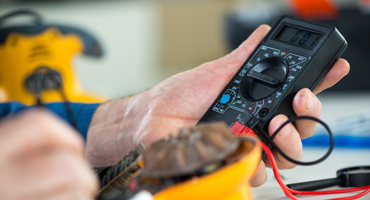Introduction to Preventive Maintenance
Preventive maintenance is essential for prolonging the lifespan of equipment, minimizing unplanned downtime, and reducing long-term maintenance costs. This guide covers the fundamentals of preventive maintenance, including its definition, types, benefits, and how to implement a maintenance plan effectively.Understanding Preventive Maintenance
Preventive maintenance involves scheduled interventions to prevent equipment failures, ensuring that assets remain operational. Tasks range from simple actions like cleaning HVAC filters to complex inspections and calibrations.Types of Preventive Maintenance
- Time-Based Maintenance: Regular inspections at predefined intervals, regardless of usage (e.g., periodic elevator inspections).
- Usage-Based Maintenance: Maintenance based on the actual use of the asset, such as lubrication after a certain number of production cycles.
When to Use Preventive Maintenance
Preventive maintenance is best for assets with predictable failure patterns and those crucial to operations. It is not suitable for items that fail randomly or have low value.Importance of Preventive Maintenance
- Reduces Downtime: Increases equipment uptime and operational efficiency.
- Enhances Reliability: Ensures equipment works properly for longer, aiding in realistic operational forecasting.
- Lowers Costs: Prevents expensive emergency repairs and part replacements.
- Increases Safety: Regular checks improve safety for users and employees.
- Improves Comfort: Ensures uninterrupted service, such as maintaining air conditioning in summer.
Steps to Create a Preventive Maintenance Plan
- Set Goals: Define clear objectives like reducing downtime or increasing reliability.
- Inventory Assets: Organize and document all assets, linking them to manufacturer recommendations.
- Prioritize Assets: Focus on critical assets essential to operations.
- Develop KPIs: Track performance to ensure the plan meets objectives.
- Review and Improve: Continuously refine the plan based on KPI results.
Scheduling Preventive Maintenance
Develop a realistic schedule considering labor productivity, maintenance backlog, and necessary resources. Be flexible to accommodate unexpected failures.Automation and Software Solutions
Using maintenance management software (CMMS) or Intelligent Maintenance Management Platforms (IMMP) can automate and streamline preventive maintenance tasks, making it easier to manage large asset inventories and track maintenance activities in real-time.Evaluating and Reviewing Maintenance Plans
Regularly measure compliance with maintenance schedules, aim for high percentages of scheduled maintenance, and ensure tasks are completed ahead of deadlines.Advantages and Disadvantages
Advantages
- Extends equipment lifespan.
- Reduces unexpected breakdowns.
- Improves reliability and safety.
- Saves costs on high-value assets.
- Enhances customer satisfaction through reliable service.
Disadvantages
- Requires significant planning and adjustment.
- May involve unnecessary maintenance.
- Higher initial costs for low-priority assets.
- Potentially increased outsourcing needs.

